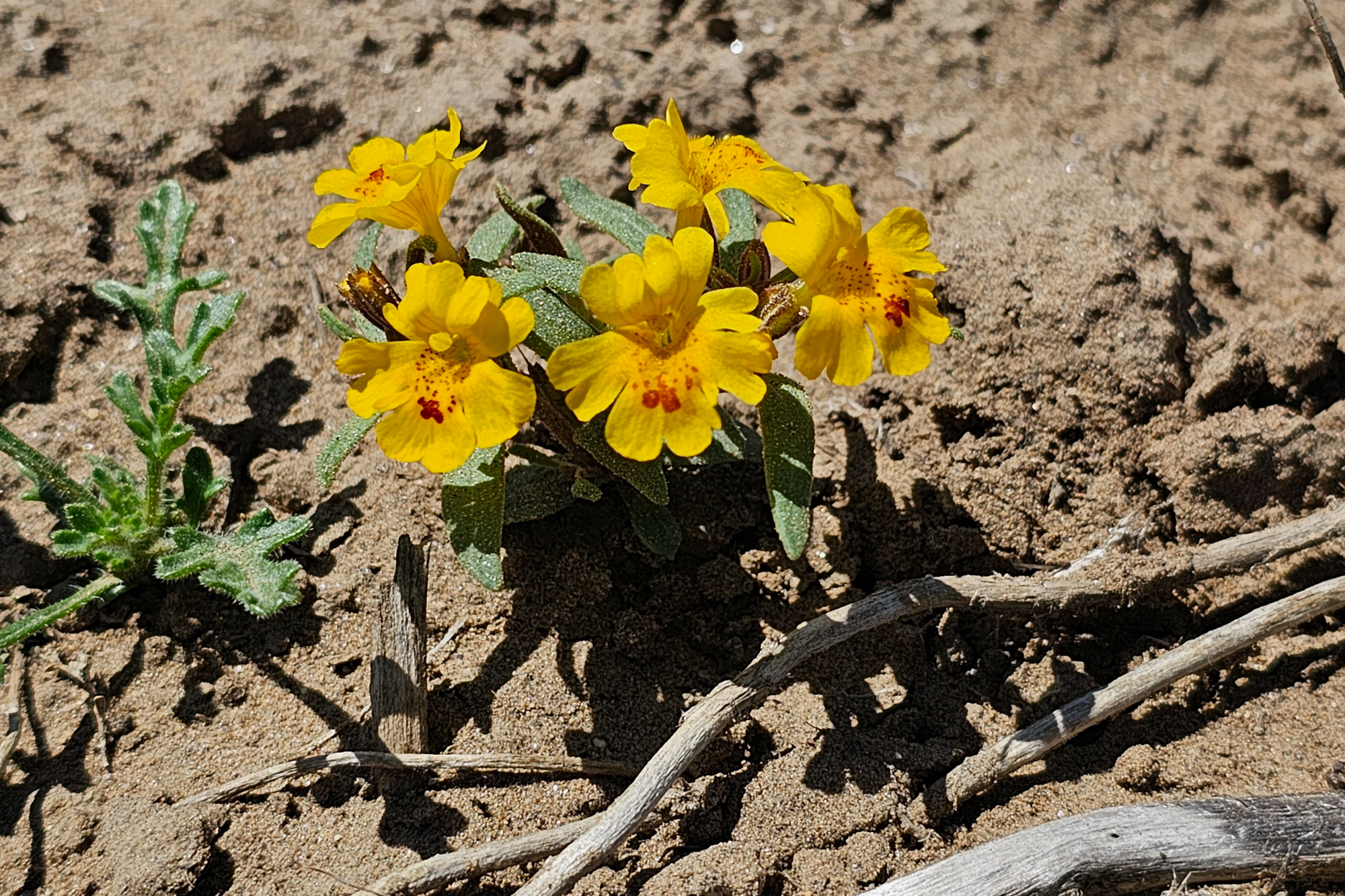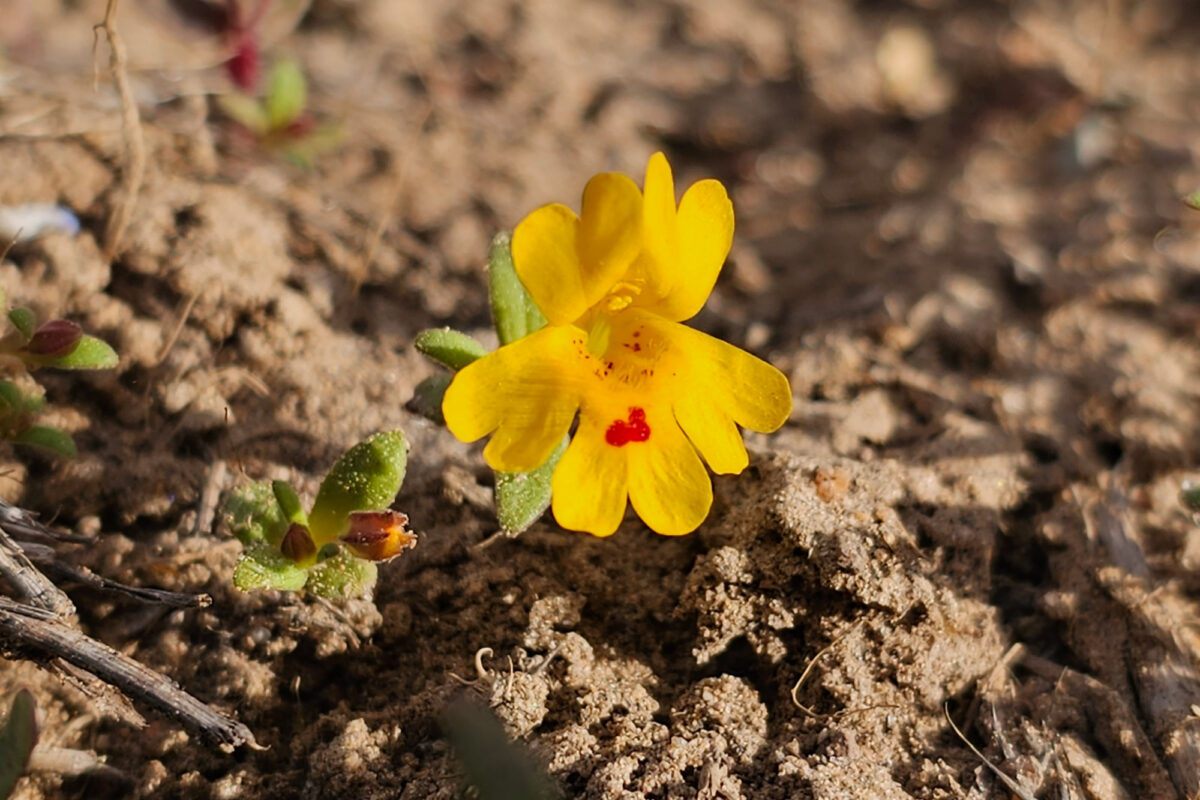Conservationists seek federal protection for rare Nevada wildflower

Come spring, clusters of tiny, yellow wildflowers will blanket Washoe, Eagle and Carson valleys.
The vibrant display put on by erythranthe carsonensis — the Carson Valley monkeyflower — is endemic to just a few areas around Northern Nevada and a miniscule corner of California’s Alpine County, growing on sandy flats and gentle slopes within sagebrush habitat.
But it’s highly threatened, according to conservationists at the Center for Biological Diversity who, on Monday, will officially petition the U.S. Fish and Wildlife Service to add the plant to the endangered species list, arguing that federal protections along with designation of critical habitat are needed to maintain the survival of the delicate flowers.
“People like living in Carson City and Douglas County because they’re surrounded by beautiful mountains and desert, and this flower is emblematic of that,” said Patrick Donnelly, Great Basin director for the center. “The threats to the species have been mounting for years.”
According to a 2022 article published in Frontiers in Conservation Science, the Carson Valley monkeyflower faces “more threats than any other rare plant in the state of Nevada,” including livestock farming and ranching, recreational activities, development and competition with invasive species.
The state Department of Conservation and Natural Resources estimates that 42 percent of the flowers’ habitat had been lost by 2018.
The vibrant yellow flowers with a prominent red spot that bloom in April and May are considered a “sensitive species” by the Bureau of Land Management’s Carson City district and are considered “critically imperiled” in California. The Nevada Natural Heritage Program considers them “imperiled” and they are on the “threatened” list of the Nevada Native Plant Society.
They grow on just over 1,000 acres, but about 20 percent of that is private land. Federal protections under the Endangered Species Act do not extend to private land.

Fifty Nevada species are protected under the act, including 11 flowering plants, eight of which are considered “threatened.” If listed, the Carson Valley monkeyflower would join plants including Tiehm’s buckwheat, which is threatened by lithium mining in central Nevada; Steamboat buckwheat, which grows in just one small section of Washoe County near a geothermal plant; and the Ash Meadows blazingstar, which only grows at Southern Nevada’s Ash Meadows National Wildlife Refuge.
The center has multiple petitions currently pending with the federal government, including the white margined penstemon in Southern Nevada and the Tecopa bird’s-beak in Esmeralda County. Those petitions were submitted last year, but listing decisions from the federal government often take more than a decade, Donnelly said.
“On its face, success is getting a species listed,” Donnelly said, adding that happens more than half the time. When a petition request is denied, the center sometimes sues or submits another petition.
“But then, success is also saving these species from extinction,” he added. “The threat of listing can inspire significant conservation activity … The parties that are affected will get together and propose a conservation plan as a means of averting a listing.
“We think the best tool to protect the species is the ESA, but if a good conservation plan is put in place … sometimes that can be a win as well.”
Signed into law Dec. 28, 1973, the Endangered Species Act just celebrated its 50th anniversary. Nationwide, there are more than 1,300 species protected by the act, and it has prevented extinction of 99 percent of its listed species. However, in October, the government delisted 21 national species, including a fruit bat and various birds, mussels and fish from the act due to extinction. Most of the species were listed in the early years of the act and were already in dire straits when listed.
